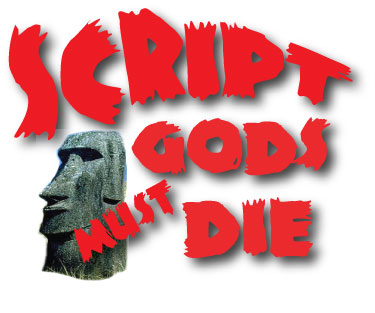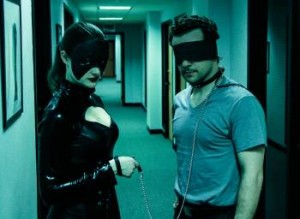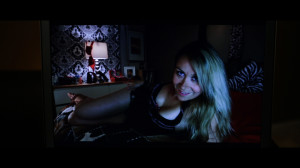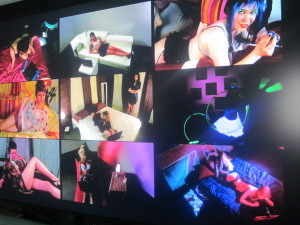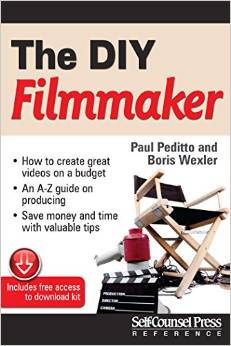“The ideal low-budget movie is set in the present, with few sets, lots of interiors, only a couple speaking actors (none of them known), no major optional effects, no horses to feed. It’s no wonder so many beginning movie-makers set a bunch of not-yet-in-the-Guild teenagers loose in an old house and have some guy in a hockey mask go around and skewer them.”
–John Sayles, Thinking in Pictures
Doing research for a book proposal, I came across these stats:
• Amazon search-keywords: Hollywood Screenwriting: Yields 20 pages, 754 books.
• Amazon search-keywords: Low Budget Filmmaking: Yields 41 pages, 549 books.
There are 754 books available today to help screenwriters in their quest to “make it” in Hollywood. Also, 549 “how-to-go-low-budget” books show the A-to-Z method of making movies for no money. But… what about the space between these?
• Amazon search-keywords: Micro-Budget Screenwriting: Yields 1 book.
Mega-audience for screenwriting books. Mega-audience for “how-to” low-budget filmmaking books. But where’s the book targeted specifically for screenwriters who want to write and make low-budget movies? A book for the 50,000+ screenwriters who registered scripts with the Writer’s Guild last year, who are desperate to find alternate strategies for making their films? Or who, through advances in digital camera technologies and software, no longer have to wait for Hollywood’s approval? Where’s the book for writers who are moving not toward Hollywood, but away from it?
You’d think there would be more coverage here. There isn’t… for a reason. When you go online and search micro-budget screenwriting, soooooo much of the advice covers the same 5 or 10 bullet points. Hell, I’ve contributed a list like that myself.
How do we write a movie for the absolute lowest price possible without compromising the vision of the film?
Let’s expand out on some of those bullet-points with today’s Top 10 list… cue music, Paul…. how to write a micro-budget screenplay:
- MICRO-BUDGET= WHAT YOU CAN PULL FROM YOUR POCKET
There’s no definition for what micro-budget is. Elusive. The thousand bucks I pull out of my pocket might equal the hundred thousand bucks an angel financier pulls from theirs. If I’m reaching for a definition, micro-budget is whatever funding you can pull from your pocket, or the pockets of your family, or the pockets of every friend you ever had when you mail the personal email begging for cash during your 30-day Kickstarter campaign. Micro-budget is money you directly control, without strings. The “unlimited-budget-write-your-dream-first-draft” has no place here. You raised, or can raise, $25,000–you sure as shit better write the movie with that figure in mind.
- CONCEPT= GENRE + SIMPLICITY + VISION
Pre-dating Robert Rodriquez for the grand-daddy of Micro, for me, is Roger Corman. Look at his IMDB page: 408 Producer credits! Do you know of anyone who has more? His 56 Directing credits date back to 1955. And while Attack Of The Crab Monsters or Teenage Cave Man might not make AFI’s Top 100 movies of all-time, very few men can claim to have a “School” created from their aesthetic. Corman mentored and gave a start to many young film directors such as Ron Howard, Martin Scorsese and Peter Bogdanovich.[He helped launch the careers of actors Peter Fonda and Jack Nicholson.
His low-budget B-movies made sure the stories reached the largest number of people by telling it in a recognizable genre. Certain genres always work for Micro– horror, comedy, thriller, drama. Corman went one-step further, adding campy comedy to his horror, or thriller aspects to a drama. These were “mash-ups” of genre done with simplicity and for a price. After you make a hundred of these you would not only know how to bring these in for a price, but for what appeals to a younger audience. Remember, Corman’s “Piranha” was called the “Best film ever made about the Viet Nam War” by Variety. ” The man had the ability to infuse genre pieces with a vision specific enough to father the “Corman School”, predating digital D.I.Y. by 40+ years.
On genres, it’s probably safe to say you should stay away from period-pieces or post-Apocalyptic action. Anyone who’s seen Primer knows Sci-Fi can be done cheap. Robert Rodriguez made El Mariachi for the infamous $7,000 bucks so Action is also on the list. Look at Fede Alvarez, who wrote and directed the remake of Evil Dead. How did a young filmmaker from Uruguay get that gig? He made a short film (Panic Attack!) that looked like it was made for a million dollars… for $300! Based on that short film he got noticed and representation in Hollywood. That is how you play the game! Show the Hollywood gatekeepers you can make a high-quality commercial product dirt cheap.
- WRITE WHAT YOU HAVE= THE ROBERT RODRIGUEZ SCHOOL
Dude literally wrote the book on the subject. Predating the digital era, his advice of using what you have is more relevant today than ever. Locations, props, wardrobe– the goal is to pay for nothing. While unlikely you can get away with that goal for some expenses should try to never pay for a location. Take the resources you can bring and make an accounting. Dad owns a bowling alley? Set the movie in a bowling alley. Mom runs the local Salvation Army store? Guess the wardrobe and props will be coming from the Salvation Army. Friend owes you a favor who has a truck that can be shot or used for crew transport? Make the call! Beg, borrow, and steal. And this is only to start… time to flush the ego.
- CENTRAL LOCATION= FEWER COMPANY MOVES
For our micro-budget film Chat the director Boris Wexler managed to nail down the Board of Trade offices he worked at to be our cybersex chat offices. Amusing juxtaposition, thinking of what was happening in those conference rooms from Monday through Friday, and then what nastiness we were up to from Friday night until Monday 4 a.m. when we finally stopped shooting our marathon weekends. This location was worth at least $10,000 dollars (if we would have had to rent a similar space) and added tremendous production value. We shot here 10 of the 18 production and a pick up day.
You as writer need to understand the basics of film production. Sure, you can read twenty books on the subject, but wouldn’t it be better to get down on a film set or two? To understand that every new location you write= a crew move= $$$. The producer has to pay the crew to pack equipment into company trucks and vans, drive to the new location, and unpack. You want to limit the necessity of company moves.
- LIMIT LOCATIONS
I wrote an article for Script Mag about August- Osage County and how the play was “opened up” for the movie screenplay. The conventional thinking is you have to do this. This was by no means a micro-budget flick, but the reasoning is the same. If you don’t want a claustrophobic s script, you’ve got to move the story to other locations. At the same time you want to limit those to, ideally, what you have access to for free. Apartments, restaurants, and bars are easy to find. Liposuction doctor’s offices–as we found on Chat–are a bit harder to come across. This was a major discussion at script stage– did we absolutely need the lipo office to tell the tale?
You can also be smart and make one apartment appear like multiple locations. Your DP volunteers his place? Nice! We can shoot Character A’s bathroom, Character B’s kitchen, Character C’s living room. This scheduling consolidating will be done by producers but it’s your script they’re locking in, so give them the best opportunity to make the thing happen at budget.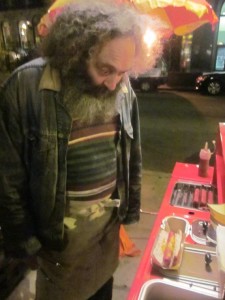
- EXTERIOR NIGHT SHOTS= JUST DON’T WRITE ‘EM!
From my journal entry of Weekend 6 of CHAT:
“I owe it to Falcon (Rush Pearson) and the Hot Dog Vendor (Rich Cotovsky) to attempt to list every sound source disturbance in our shooting the single scene that was the Hot Dog Vendor monologue. For whatever purpose, I decided to give the biggest monologue of the movie to a ONE SCENE character in, yes, an exterior night shot. Notoriously difficult to shoot exterior night scenes for just such sound troubles. The cast and crew attempt to lay it on the line and throw down against the dark forces at our Weekend 6 location on Erie Street. A smattering of these were:
• The loose manhole cover that jiggled metalic for every car that ran over it.
• The beeping gate of the parking garage that rang out like a warning bell on Star Trek Deep Space 9.
• The drunken Erie Street bar hoppers whose fascinating drunk speak babble was oh so more important than respecting some dinky micro-budget trying to make its day.
• The passing EMT van, cop cars, cop wagon, limo, pizza delivery guys, and a dozen other rubber-neckers who slowed vehicals to a crawl to gape out on what might have been the filming of the final first-season episode of Chicago Fire, but alas, was only us.
• The same vehicals attempting to park in the two parking spaces cleared out by Chat crew to have ample views of the location across the street. PA’s and the writer himself were dispatched as living lawn chairs in the great Chicago tradition of saving cleared parking spaces. Unfortunately, this only works in winter.
• The sirens in downtown skyscraper chasms howling…
• The skateboardersclick-clacking…
• The Harley-engines revving…
• The small dogs of high-rent paying owners, late-night walked whilst yipper-yapping…
• The constant Muddy Waters from yet another ubiquitious Friday night sportsbar…
These and a dozen others. Truly amazing Cotovsky pulled it off, standing and delivering that monologue time and again like some cross between Abby Hoffman and Charles Manson. There are scenes that great movies, and even mediocre movies, will always be remembered by. When you watch Chat don’t forget I told you about the hot dog vendor scene. You’re will remember it.
PLEASE limit those exterior night shots!”
- LIMIT PRINCIPLE AND SECONDARY CHARACTERS
Even if the story you’re writing is character-driven, it doesn’t mean you’ll need 10 principle and secondary characters to tell it. I would suggest limiting key characters to 5 and under. SAG Minimum is $100 bucks a day, but your producing team is not spending that on 10 actors, not and maintain a budget. And you most definitely don’t want to get into the habit of paying some of your actors and not others– word will spread about that making your producers look like supreme dicks.
Force yourself to make sure every character has a purpose. Limit the number of extras, and crowd scenes. Do not write in Wrigley Field, do not write in Union Station. Whether or not these can be “stolen” is a debate for another day. I’m not forcing producers to find a hundred extras unless there’s no movie without them.
- KIDS, WEATHER, ANIMALS, BLOOD AND FX EFFECTS= JUST DON’T WRITE ‘EM!
You’re the writer. You think it’s not your job to know that the simple gunplay you innocently wrote in will require a gun wrangler to oversee and train the actors. Or that it requires a Chicago Police Department officer on set for the full day. Or that Chicago cops gets double-time if your shoot happens to stretch into 15 hours. Or that you need someone to convincingly mix blood and apply it to the actors. You didn’t really think about all that when you wrote those two simple lines into the script because…well, you just didn’t. These things you write have to be made to happen, and that costs $$$.
The question you have to ask is– did they need to happen to tell the story and not compromise the movie’s vision?
Kids are only allowed to work half a day on a film set, and the producer must pay for a child Welfare Officer or/and Teacher to be present at all times. Whenever you write a kid in your script, you are paying for an adult who will NOT appear on screen.
With all due respect to the good people of PETA, I still have nightmares dealing with them because we were pinning cockroaches down on doughnuts. I just had to have the main character about to bite down on a doughnut and seeing a cockroach on it. Those cockroaches weren’t street bugs either–they had to be imported–at a cost–and pinned down with PETA’s consent–to get the shot. By the time we were finally ready to shoot I wondered why the f*&^ I wrote it in at all.
- PAGE COUNT= SOUTH OF 100
What? You’re saying I can’t write a 105 page micro-budget? Nope. I’m saying it would ideal if the page count were south of 100. Every page costs $$$ to shoot. Your mission Mr. Phelps, should you choose to accept it–is to knock down that page count to the best of your ability. This takes us back to the cut instinct— the reductive mind you need to attack the script.
First draft, no limits, push out, give us your vision exactly as you see it. Page count doesn’t matter.
Follow up drafts, rewriting, cutting down page count, additions where necessary.
White Production draft (the shooting script): Every scene boiled down to necessity (meaning, if you remove it, the story falls apart), trimming every scene, every action line, every line of dialogue for necessity.
- “STORY IS FREE”
Always loved that simple expression from John August. While there might be some downside to not having money for Transformers-style stunts, the upside is it makes the writer utterly essential in the process of micro-budget. People love great storytelling. They are starved for powerful and original work. Writing micro-budget means concentrating on the character-driven, on the dialogue, on the juxtaposition of stuff in your brain the world has never seen before. Eraserhead over Lara Croft, Tomb Raider. Happiness over Battleship.
You’ve talked about it and talked about it. Now it’s there to be had. It just takes a great script.
What are you waiting for?
Let’s go–write it.
